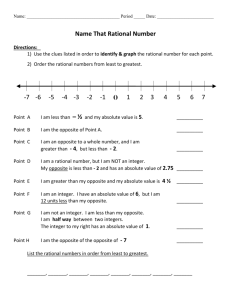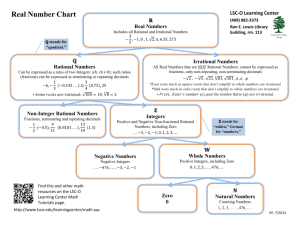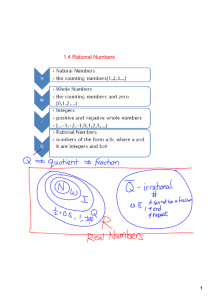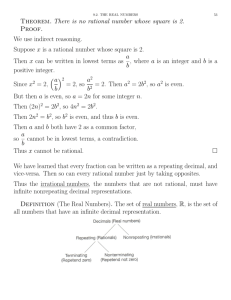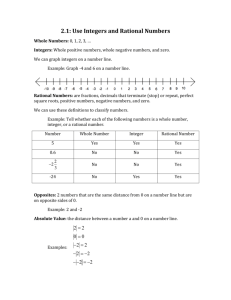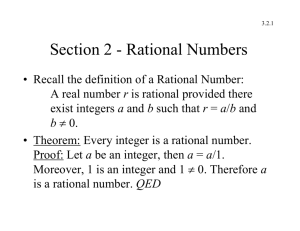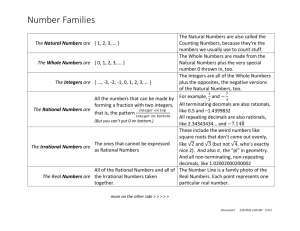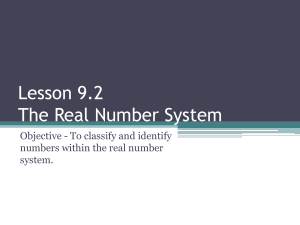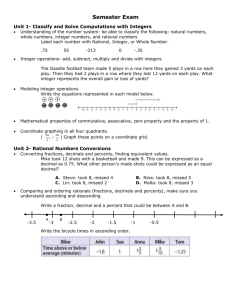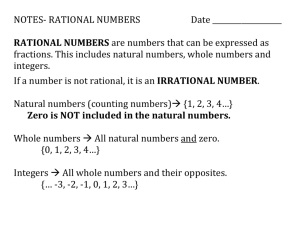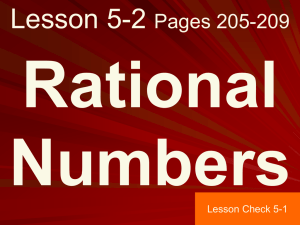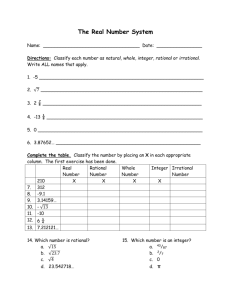Geometric progression
advertisement
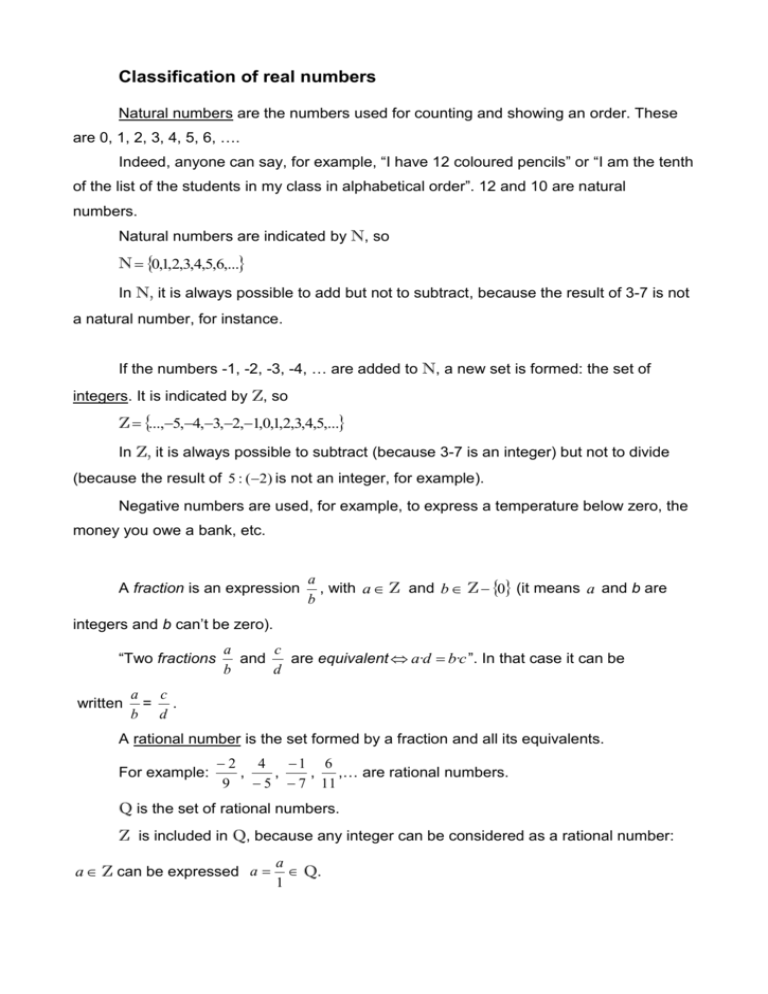
Classification of real numbers Natural numbers are the numbers used for counting and showing an order. These are 0, 1, 2, 3, 4, 5, 6, …. Indeed, anyone can say, for example, “I have 12 coloured pencils” or “I am the tenth of the list of the students in my class in alphabetical order”. 12 and 10 are natural numbers. Natural numbers are indicated by N, so N 0,1,2,3,4,5,6,... In N, it is always possible to add but not to subtract, because the result of 3-7 is not a natural number, for instance. If the numbers -1, -2, -3, -4, … are added to N, a new set is formed: the set of integers. It is indicated by Z, so Z ...,5,4,3,2,1,0,1,2,3,4,5,... In Z, it is always possible to subtract (because 3-7 is an integer) but not to divide (because the result of 5 : ( 2) is not an integer, for example). Negative numbers are used, for example, to express a temperature below zero, the money you owe a bank, etc. A fraction is an expression a , with a Z and b Z 0 (it means a and b are b integers and b can’t be zero). “Two fractions written a c and are equivalent a·d b·c ”. In that case it can be b d a c = . b d A rational number is the set formed by a fraction and all its equivalents. For example: 2 4 1 6 , , , ,… are rational numbers. 9 5 7 11 Q is the set of rational numbers. Z is included in Q, because any integer can be considered as a rational number: a Z can be expressed a a Q. 1 In Q, it is always possible to divide, but not to calculate, for example square roots like 2 , which is not a rational number. This has been known for centuries, since the Greek Civilisation. Beautiful proof by contradiction of this fact comes from then. If square roots, cubic roots, the number , the number e, etc. are added to Q, a new set of numbers is formed: real numbers. Real numbers are indicated by R, so R= Q 2, 3 4 , 3 11, e, , 4 5 ,... , where all the numbers added to Q are called irrationals. All real numbers are decimal numbers and vice versa. Indeed, rational numbers are limited decimals or periodical decimals whereas irrational numbers are neither limited nor periodical decimals. Examples: 1 0'5 Q 2 2 1'41421356... R 5'010010001... R 1 0'16666... Q 6 1 0'3333... Q 3 3'1415926535... R 3 11 2'22398009... R 1'212223242526... R 4 5 1'49534878... R

